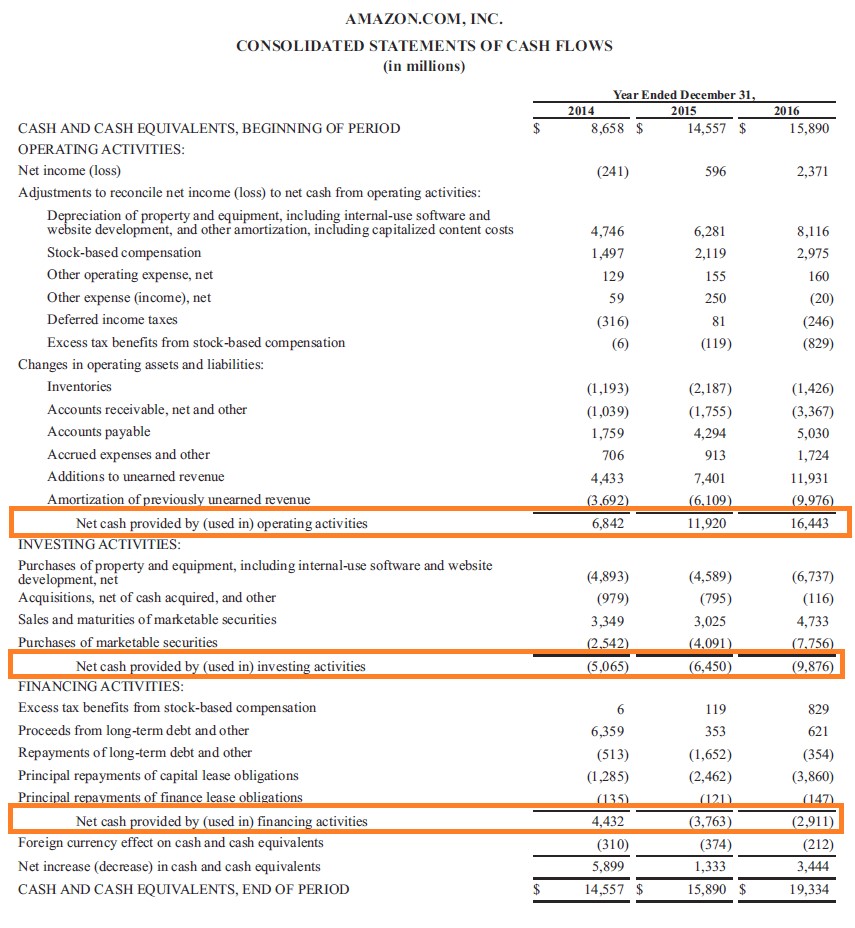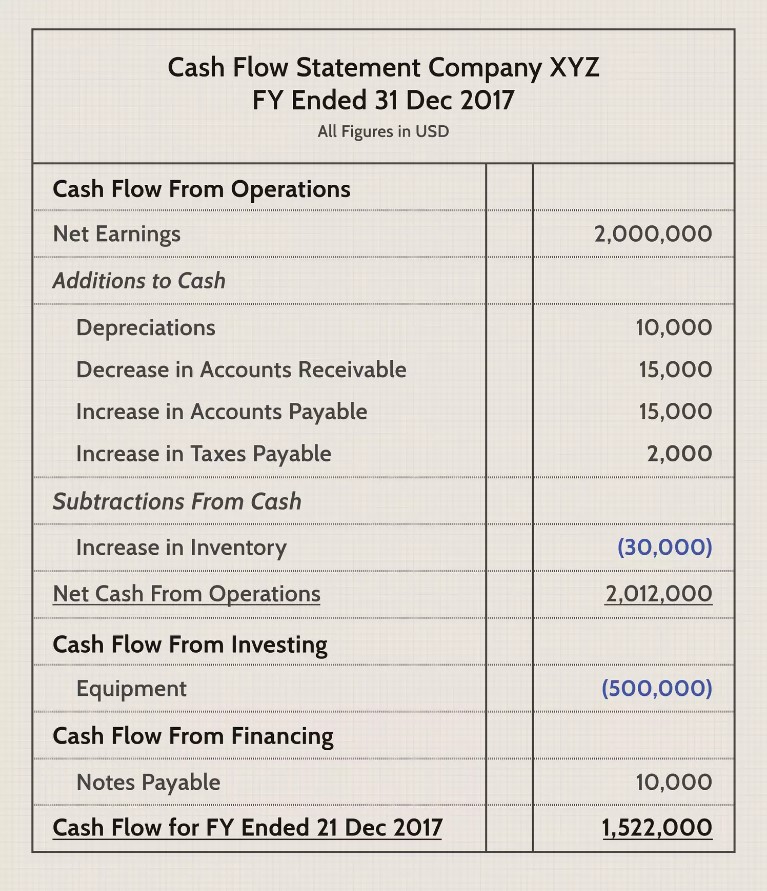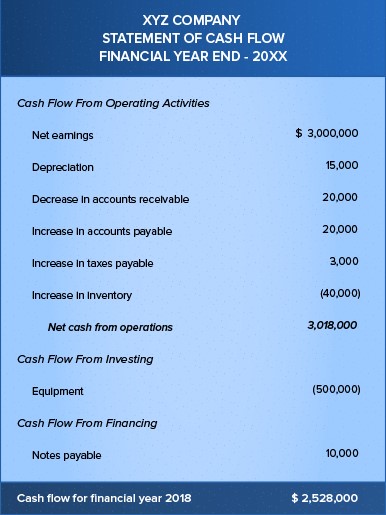One part, essential to running a business and responsibly monitoring your company’s finance, is knowing how to produce and read a cash flow statement. That’s why we’re here with all that you need to know about it. By the end, you’ll be better equipped to be fiscally responsible with your business – big or small.
What is a Cash Flow Statement?
Cash flow statements (CFS), are financial statements that summarize your company’s movement of cash – what comes in and what goes out. The CFS is supposed to measure how well you manage your cash position, meaning how well the company generates cash to pay its debt obligations and fund its operating expenses.
Being one of three main financial statements, the CFS complements the balance sheet and the income statement. After all, having cash available is a base requirement for businesses to stay solvent and avoid bankruptcy and keep running.
A CFS plays a role in helping to determine a company’s performance. It’s usually helpful for making cash forecasts to enable short-term planning. You should be able to see the incoming cash – that comes from operating activities, investing activities and financial activities – and cash outflows – expenses paid for business activities and investments.
The information that you get from the cash flow statement is beneficial for the management to take informed decisions for regulating business operations. Companies generally aim for a positive cash flow for their business operations without which the company may have to borrow money to keep the business going. In short, cash flow statements are a measurement of how well you’re able to keep your company generating cash to fund operating expenses and pay debt obligations.
Why is the Cash Flow Statement important?

In simple terms, a CFS summarizes the amount of cash that enters and leaves your business. A CFS is important to you because:
1. Give detail about spending activities
Cash flow statements give a clearer picture of the different payments your company makes. If your company, for example, took out a loan and is paying it back, this info would be included in a cash flow statement, providing insight into the actual cash your business spent on paying off creditors.
CFS also shows transactions that are recorded in cash and not reflected in the other financial statements. These include inventory purchases, extending credit to customers, and buying capital equipment.
2. Useful for short-term planning
A successful business always needs to have sufficient liquid cash to fulfill short-term obligations like upcoming payments. You can analyze incoming and outgoing cash from past transactions to make crucial decisions. Such decisions include foreseeing cash deficits to pay off debts or establishing a base to request for credit from banks. Staying solvent also avoids bankruptcy.
3. Help to maintain the optimum cash balance
It is vital for you and your stakeholders to know the optimal amount of cash they need to operate successfully. This is one of the most important things a cash flow statement can accomplish – analyzing whether you have an excess or deficit of funds. With excess cash, you can invest that money, and when in a deficit, you can turn to external lenders or investors to reach an optimal cash balance.
4. Focus on generating cash
Generating cash through profits is key to your company’s growth. But there are some other ways to generate cash. For example, when you’re able to find a way to pay less for equipment, that’s actually you generating cash. Every time you collect receivables from your customers quicker than usual, that’s also gaining cash. And your CFS shows whether or not you’re doing so.
5. Long-term planning use
Just like how it is to short-term planning, CFS can help you plan for the long term. A company’s growth is dependent on accurate financial planning, and a CFS can help you identify specific, implementable changes.
These changes could very well situate the business within a solid financial position over time. CFS also helps you understand what activities your company needs to prioritize in preparation for the future.
Cash Flow Statement format

A CFS breaks down the flow of your money into three different sections:
1. Operating activities
The operating activities on the CFS include any source and use of cash from your business. It reflects how much cash is generated from a company’s products or services.
Examples of operating activities could include:
- Rent payments
- Interest payments
- Income tax payments
- Employee salary/wage payments
- Receipts from sales of goods and services
- Payments made to suppliers (goods/services) used in production
2. Investment activities
This second section includes any source and use of cash from your company’s investments. Purchases or sales of assets, and loans made to vendors or received from customers are included in this category. In short, changes in equipment, assets, or investments relate to cash from investing.
Changes in cash from investing are usually considered cash-out items because cash is used to buy things:
- property
- vehicles
- furniture
- buildings
- equipment
But when you divest an asset, this is considered cash-in for calculating cash from investing. Sometimes, you might experience negative cash flow because of heavy investment expenditure, but don’t worry. This isn’t always an indicator of poor performance, because it can lead to high capital growth further down the line.
3. Financial activities
Financial activities include transactions regarding debt, equity, and dividends. In this, incoming cash is when capital is raised (like money from investors or banks), and outgoing cash is when dividends are paid. This section outlines all cash transactions from long-term liability and stockholder equity accounts. This section reflects the company’s net cash flow, taking stock purchases and debt financing into consideration.
How to prepare a Cash Flow Statement
CFS can appear complex and intimidating at first. But don’t worry. It’s not at all that hard if you follow our guide here:
1. Gather important documents and data
First, you need to get yourself:
- A balance sheet
- A statement of changes in equity
- A statement of comprehensive income
- A statement of cash flows for the previous reporting period
-
Information about any material transactions made by your company during the current period (contracts, legal files, investment documents, etc.)
2. Calculate changes in the balance sheet
Then, work out any changes to your balance sheet over the current period. You do this by looking at your liabilities, assets and equities, and subtracting the closing balance sheet figure from your opening balance sheet figure.
3. Put all changes in the balance sheet into the cash flow statement
Next, take a look at all the changes you recorded in the previous step and enter them into a blank cash flow statement. Be sure to place them in the appropriate section (operating activities, investing activities, or financial activities).
4. Adjust for non-cash items from other information
Fourth, with CFS you have so far, identify any potential non-cash items that may have been recorded on the balance sheet. For example, depreciation expenses, income tax expenses, foreign exchange differences, etc. When you’ve identified a non-cash transaction, just make an adjustment to the cash flow statement.
5. Do the final calculation
Finally, you just sum up all the individual entries, calculating the overall change in the balance sheet while adjusting for non-cash items, which provides you with the total cash movement for that item.
Cash Flow Statement examples
Again, don’t fret! We have some examples for you to take a look at for reference so you get a better idea on what a CFS should look like.







Leave a Comment